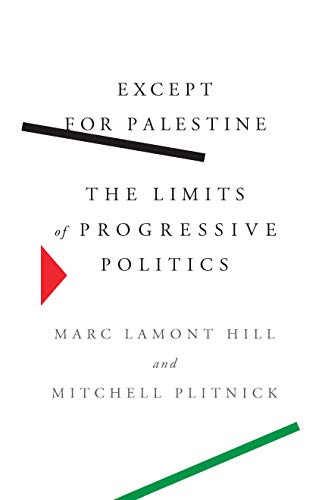Superpower Showdown: How the Battle Between Trump and Xi Threatens a New Cold War, Bob Davis and Lingling Wei, Harper Business, pp. 467, ISBN: 978-0-06-295305-6
On August 6, President of the United States, Donald Trump, issued an executive order seeking to “address the threat posed by TikTok.” TikTok is a mobile application developed by Chinese owned ByteDance Ltd. and downloaded over 175 million times in the US. The US administration alleges that the app captures large swathes of data from its users and potentially allows the Chinese Communist Party to steal proprietary information from Americans. Therefore, to protect national security, the President prohibited any American entity from dealing with the Chinese company. Together with WeChat, these phone apps supposedly “threaten the national security, foreign policy, and economy of the United States.”
This latest ratcheting up of tensions between the US and China comes on the heels of the American presidential election and can be partly dismissed as Trump’s electioneering. However, it also follows a pattern in Trump administration’s attempts to exert enough pressure on China to force it to adopt structural changes that the administration has sought since Trump took office.
The latest tantrum by the administration reflects their continued underestimation of the strength of the Chinese economy and diplomatic reach. China’s share of world GDP has risen from 2% in 1995 to 16.33% in 2018. Its economy is so deeply embedded in the global supply chains that by attempting to hurt the Chinese economy, the US would only end up injuring itself, as is evident in the consequences of the ongoing trade war between the two countries. Over two years, beginning in January 2018, the US increased tariffs on Chinese exports from 3% to the current 19%, while China applied 20% on American exports. The effect, coupled with the mishandling of the COVID-19 pandemic, has damaged Trump’s rural base, with farmers reeling from the effective closure of the Chinese market. The US has seen an 8% drop in growth, while China is forecast to continue growing at a steady 1%. Shenzhen is the best performing stock market this year, while New York has seen historic drops. As The Economist recently put it, “the hope for confrontation followed by capitulation is misguided.”
In their new book, Bob Davis and Lingling Wei, a pair of Wall Street Journal journalists covering the US and China respectively, chronicle the Trump administration’s repeated attempts to impose its will on China. They trace the origins of the confrontation to the 1990s when China and the US negotiated the former’s entry into the WTO. A stealthy coalition of US businesses seeking to tap into the 1.2 billion people market cajoled the US administration into working with China to develop an acceptable framework for China’s entry. The goal of the Clinton administration was to ensure that China restructures its economy along the Western liberal dictum and open its borders to unrestrained foreign capital. Nothing was to be off-limits; telecommunications, insurance and banking sectors, public procurement and other sensitive domains were to allow entry of foreign corporations. In the 1990s, the US had leverage, for booming Chinese industries needed foreign markets to place their products unhampered and without crippling tariffs and quotas they faced. By becoming members of the WTO, China would ensure that its products were treated the same way as any other country through the most favoured nation clause.
The Clinton administration would soon learn that China was committed to its national security and economic interests and accepted only those demands which did not threaten its rule. The Central Committee of the Chinese Communist Party was the ultimate decision-making body in China and acted as a check on the views that the then Premier Zhu Rongji espoused. While some Chinese politicians believed that market competition and foreign investment, coupled with the restructuring of the domestic economy was the way the country should develop, others firmly believed that the State should retain control over the economy. By retaining control, China would ensure its sovereignty, which is only strengthened by its position in the global supply chains. By setting the limits on foreign activity in the domestic markets, China could appease foreign capital. At the same time, China could ensure that the State acted to shore up domestic producers and address the socio-economic issues Chinese people faced. China’s poverty rate fell from 88% in 1981 to 0.7% in 2015.
As Davis and Wei show in their book, at the heart of the trade dispute between the two countries is China’s reluctance to relinquish its sovereignty. Its strength frustrates the United States, whose global hegemonic power is threatened by China’s rise. The theme of the successive rounds of negotiations between the two countries were structural changes that China was required to adopt. The US alleges that China forces technology transfers, steals intellectual property to develop domestic industries, unfairly subsidies local producers, and manipulates currency. Forced technology transfer was the ostensible cause for activating section 301 of the US Trade Act of 1974, which gives the President the power to impose trade barriers in order to force the removal of a particular policy a foreign government implements that restricts US commerce.
However, China does not force technology transfers. It enacts laws in its national interests, which, as a sovereign nation, it is entitled and required to do. Its “Made in China 2025” plan, which was issued in 2015, wants China to reduce its dependence on other countries in sophisticated technology and advance up value chains from its low-cost manufacturing base. The plan calls for China to become a global leader in innovation, science, and technology. The Chinese government has issued policies and enacted laws to facilitate the pursuit of that goal. One such law imposed foreign equity limitations and made requirements for the establishment of joint ventures. In certain strategic industries, foreign companies are required to partner with domestic firms in order to operate their businesses. This requirement precludes foreign companies from entering the market on their own terms and exploiting their dominant position. There are also administrative reviews and licensing requirements that a foreign company must comply with, which often require the company to disclose information relevant to the product to be developed. While the US Trade Representative’s office claims that this leads to “forced technology transfer,” foreign companies choose to enter into such partnerships to expand into sensitive industries. Their entry is optional, not forced. As Davis and Wei show, when China put out bids for its C919 aircraft program in 2009, GE “jumped at the opportunity to set up a joint venture, even though that meant sharing technology.”
The announcement of China’s “Made in China 2025” plan was a watershed moment for foreign businesses, hitherto supportive of the Chinese government. The plan lists ten key industries in which China wishes to become the world leader: information technology, robotics, green energy and vehicles, aerospace equipment, ocean engineering, railway and power equipment, materials, medicine and medical devices and agricultural machinery. In other words, China will seek to develop its domestic industry to be a competitor to the West in industries that have historically been dominated by the West. Being a leader has allowed Western capitalists to prosper and societies to develop while relying on cheap low-cost manufacturing of the Global South. By seeking to mount a challenge to Boeing and Airbus, Honeywell, and Cisco, among others, China has turned friends into enemies.
The Trump administration is guilty of what they accuse Xi Jinping’s China. Both governments seek to advance the interests of their domestic industries and producers. Behind the veneer of “unfairness” thrown at the Chinese government, hides an attempt to promote particular interests. The success of the Chinese government in defending its interests could partly be attributed to the cohesiveness and robustness of its leadership. As Davis and Wei show in their book, the US side is marred in bureaucratic battles with competing ideas and interests. There are trade hawks such as the current Director of Trade and Manufacturing Policy Peter Navarro and the US Trade Representative Robert Lighthizer. They advocate offensive trade measures and structural changes in China. Then there are others, such as the US Treasury Secretary Steve Mnuchin and the Commerce Secretary Wilbur Ross, and until recently Gary Cohn, who are staunch opponents of tariffs. Trump’s decisions are a product of the in-fighting of these two competing camps, and alternating news coverage of farmworkers and the Dow Jones. On the other hand, the Chinese leadership acts united through its various representatives and Xi Jinping, reaching decisions in the Central Committee meetings and acting to further those policies.
One remarkable fact that stands out in Superpower Showdown is the extent to which business interests guide Sino-American relations. The American administration collaborated closely with domestic industrial behemoths in their negotiations with China, and China likewise relied on their good graces with American companies to communicate with the US administration on their behalf. Stephen Schwartzman, the billionaire co-founder of the private equity firm, the Blackstone Group, acted as an unofficial fixer for the two parties. The Blackstone Group is one of the largest real estate developers in the US, and Schwarzman’s connections to Trump and Mnuchin date back to their developer and corporate banker days. Schwarzman also funds a multimillion-dollar scholarship fund that brings American students to China’s prestigious Tsinghua University, which endears him to the Chinese leadership. He at once ran a business advisory group for Trump and was explaining Trump to Alibaba Group founder Jack Ma and Liu He, one of the Vice Premiers of China. Hank Paulson and Sheldon Anderson performed similar roles. To what extent could the leaders rely on advice from CEOs whose companies are set to be impacted by China’s “Made in China 2025” plan? Perhaps that is at the heart of the dispute.
Other than businessmen, the US has sought to enter into alliances that would contain China’s rise. It initially joined the TPP to create a large enough trading bloc to divert Chinese exports. However, given the already tariff-free trade relations the member countries enjoyed and the political consequences of the agreement, the US eventually withdrew. US legislators, both Democratic and Republican, have become increasingly aggressive in their pronouncements against China. The US allies are pushed to toughen their stance and join the US. As Mike Pompeo stated: “Freedom-loving nations of the world must induce China to change.” Cable news networks inflame passions with tirades against the Chinese leadership. On the other hand, China’s Belt and Road Initiative creates another camp of countries seeking to develop using China’s money and expertise.
The continued Chinese successes in repudiating attacks by the US on diplomatic and trade fronts show that while the 20th century may have been American, the 21st century looks increasingly likely to be Chinese. How the US responds to that will determine whether we are at the cusp of a new Cold War.




